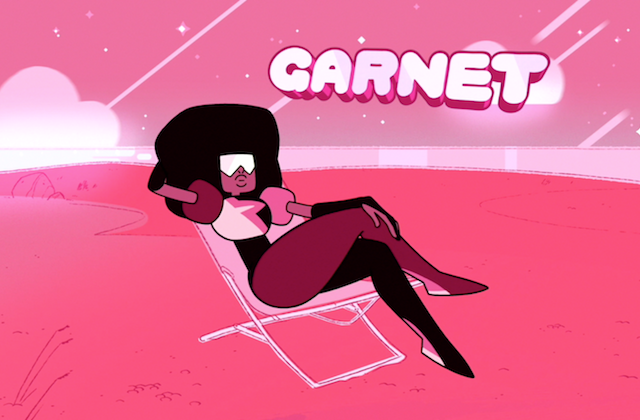I love cartoons. Funny ones (y’all have to get into “We Bare Bears”), weird ones (I’m looking at you, “The Amazing World of Gumball”), cinematic ones (I wanted to see “Spider-Man: Into the Spider-Verse” again before it was even over). But none of the many animated projects I’ve watched has ever crept into all parts of my life the way “Steven Universe” has.
It debuted on Cartoon Network in late 2013, the creation of executive producer Rebecca Sugar. It stars Steven Universe, a half human, half alien teenager being raised by three Crystal Gems—Garnet, Amethyst and Pearl. What starts as a monster of the week show, where our heroes embark on missions to save us from some vague threat, quickly morphs into a hilarious, trope-busting, introspective, gender expansive rumination on everything from the trauma of colonization to the bright light of self love to the importance of standing in our joy. As Steven matures and learns about himself and his purpose, we grow right along with him, learning to flex our empathy muscles and picking up mysterious pieces of the Gems’ backstory as we go.
Speaking of which, the Gems are aliens who abandoned—and then challenged—the status quo of their planet, Homeworld, to protect earthlings and embrace the full potential of humanity. Despite living among us every day for 5,000 years, these nonbinary beings who present in female-coded forms see us not as we are, but as we could be. And no one does this better than Garnet.
{{image:2}}
Garnet—an Afro-sporting Black woman voiced by singer Estelle—leads the group of heroes. She is a fusion, made up of two different types of Gems who love each other so much that they chose to continuously inhabit the same form, the physical manifestation of a healthy romantic relationship.
Back on Homeworld, where Gems only combine with their own kind to complete utilitarian tasks, she’s seen as an abomination. But in this universe, she’s a badass whose future vision allows her to see the possible journeys that stretch out before us. Thus unconstrained by the time and space that appear to hold our system in stasis, Garnet can see how our immediate actions impact generations to come. This ability gives her a preternatural calm and hope—she is intimate with our better angels.
Lots of animated projects are praised for “working on two levels,” employing sight gags and slightly dirty humor to engage children and their otherwise bored parents alike. But that’s not what Sugar’s show does. “Steven Universe” works on just one level, never talking over the heads of the littles it was created for, while tackling themes commonly thought of as “adult” like love, justice, reconciliation, vulnerability and gender expression in a way that makes them easy for everyone to understand, and more importantly, to feel.
My seven-year-old daughter and I watch it together; I’m on my third spin through the 154 11-minute episodes that have aired so far, she’s on her second. But even when we’re not staring intently at a device, the show is never far from our hearts or minds. We’ve used it as a jumping off point for conversations about codependency and gender expression, introduced it to countless friends, gathered around tiny screens in hotel rooms to catch new episode drops, and have been known to loudly chant “Cheeseburger backpack! Cheeseburger backpack!” in random places. (See episode three.)
But perhaps the thing that hijacks our minds most often is the music, much of which is created by Sugar, who identifies as a nonbinary woman. The closing credits song, “Love Like You,” makes me weepy nearly every time I hear it: "If I could begin to be / Half of what you think of me / I could do about anything / I could even learn how to love."
That future—where I as a Black woman in America am able to live and love as my whole self, and reach my full potential unencumbered by misogyny, racism and ingrained self doubt—is one that Garnet can see. It’s one where people of color, queer folks and all our marginalized fam are able to topple White supremacy and the bullshit -isms that come with it. Where we are able to move beyond reacting to the daily ravages of the system, because as Tupac said, “We ain’t meant to survive, ’cause it’s a setup.”
To get there, we need to make space and time to future dream, to imagine what we want the world to look like, not just push back against the distraction of what has been placed before us. “Steven Universe” shows us that the revolution may actually be televised, but it will never be successful if we don’t first dream up a new system in which it’s possible.
More of Kenrya’s Favorites:
Movie: “Black Panther”
Music: “Coachella Valley Arts and Music Festival Presents: Beyoncé,” by Beyoncé
Hashtag: #CountEveryVote
Podcast: The Read
Book: “Heavy: An American Memoir,” by Kiese Laymon
Artist: Saa Rankin Naasel
Meme:
